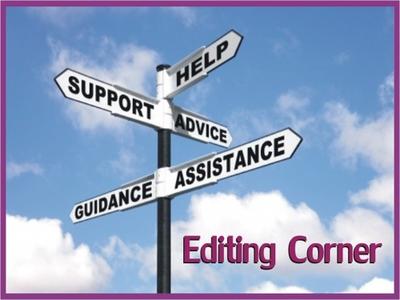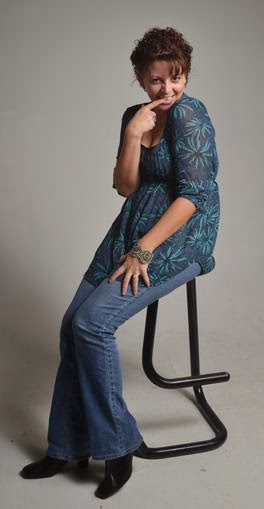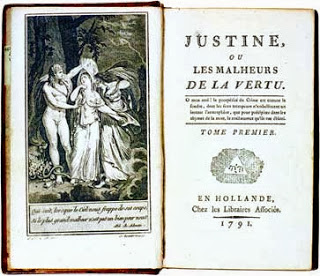By
Lisabet Sarai
Writing
a novel is an heroic endeavor. It takes not only imagination and
creativity, but also more prosaic virtues such as perseverance,
discipline, and attention to detail. Anyone who can generate 60,000
to 100,000 words without giving up in self-disgust has my admiration.
I’ve done it myself, so I know how difficult it is. Yet many
novelists quail in the face of a far less daunting task: producing a
few thousand words for a synopsis of their work that is often
required by publishers.
I
think that one reason why so many writers claim to have trouble with
synopses is that they may have misconceptions about what a synopsis
is supposed to accomplish. Also, this may be a forest-and-trees
phenomenon. Novelists are so deeply involved in the complexities of
their fictional worlds, they may have a hard time pulling back and
taking a more generalized view.
What
is a Synopsis?
A
synopsis is a summary of a longer work—for
purposes of this article, a novel or novella. Publishers have
different standards for the length and format of a synopsis. One
common format is a chapter-by-chapter summary, with one or two
paragraphs per chapter. Assuming 200 words per paragraph and 10 to 20
chapters, the length of a typical synopsis will be in the same range
as the average short story: 2000 to 4000 words.
You
should of course always consult your target publisher’s guidelines
before creating the synopsis. Some publishers want more detail, while
others may ask for less.
Although
a synopsis is of comparable length to a story, the similarities end
there. A synopsis does not need to establish the setting, set a mood,
or develop characters. Fundamentally, a synopsis is about plot. It is
a prose outline of the major events in your novel. Your synopsis
needs to introduce and identify your major characters, then explain
what they do or experience during the course of the novel. Given the
constraints of word count, your synopsis should not include much
description or backstory. It does not need to create suspense. It
should never contain dialogue.
The
purpose of a synopsis is to convey information to the publisher (or
editor or agent). The synopsis allows the publisher to evaluate
whether the action flow of your novel makes sense, and whether it
will be of interest to their target audience. If your novel is not
yet completed, the synopsis also demonstrates that you have worked
out the resolution for the conflicts and problems that you introduce
in your early chapters. (It’s sometimes possible to sell an
incomplete novel on speculation, based on initial chapters plus a
synopsis. In fact, I’ve sold four of my novels in this manner.)
A
synopsis is part of your marketing package, but it is not intended to
demonstrate your fabulous writing style. Your sample chapters should
do this. (Of course, the synopsis must be free of spelling and
grammar errors, but that should be true of every bit of writing you
show to the world.)
A
synopsis is also different from a “blurb”—the
few brief come-on paragraphs included on the buy page or the back
cover. A blurb is intended for readers, not publishers or editors.
Blurbs (which I find much harder to write than synopses) must be
clever and engaging. They’re designed to hook potential readers and
to make them want to read your book. A synopsis, in contrast, needs
does not need to be particularly snappy or creative. Rather, it needs
to be clear and comprehensible, communicating the essential structure
of your novel while leaving out extraneous details.
How
to Write a Synopsis
There
are a variety of strategies that can be applied to creating a
synopsis. They vary somewhat, depending on whether your novel is
already complete or you’re writing a synopsis for a speculative
submission. Different strategies might feel more natural, depending
on your cognitive style: linear and hierarchical versus non-linear
and associative.
1.
The outline approach.
This
strategy works well for linear thinkers. Create an outline of your
novel. Create a major item for each chapter. Within each major
section, list in order the most important events that occur in that
chapter as sub-items. Try to limit the number of sub-items to three
or four. Focus on the one chapter you are considering. Don’t go back
or forward in the narrative flow.
Once
you have your outline, turn each major section into a paragraph. Each
sub-item should generate one or at most two sentences.
The
result of this process will be a synopsis, but it may be hard to
follow because it is missing transitions. Go back and add, as
necessary, sentences that link chapter events back to previous
chapters.
Once
you have tried this approach a few times, you’ll probably discover
that you don’t need to create the intermediate outline. You will be
able to move directly from a mental summary of the major events in a
chapter to the sentences of the synopsis.
A
variant to this approach is to use the scene breaks in your chapters
to identify the sub-items. In other words, one scene will become one
sentence in the synopsis.
2.
The Post-it Note approach.
Some
writers do not feel comfortable with outlines, either when creating
their stories or afterwards. Yet a synopsis is, structurally
speaking, an outline. For non-linear thinkers, the scene-based
strategy, in particular, may feel terribly artificial. For these
authors, the Post-it Note approach may be more natural.
Sit
down with a pad of Post-it Notes. Start thinking about your novel. On
each Post-it Note, write down one story point that you think is
important to your novel. Don’t worry about temporal order; just jot
down your first impressions. However, you should try to focus on
actions or events rather than characters or setting.
Continue
until you have twenty or thirty items on your Post-It Notes. Then go
back and arrange them into the time sequence in which they occur in
your novel. Next, survey your notes and satisfy yourself that all
items are equally important. Try to remove items that are not
critical to the plot, even if they illuminate the characters or
perform some other narrative function.
Finally,
turn each of your notes into a sentence or two. Fill in transitions
as necessary. The result should be a reasonably coherent summary of
the major happenings in your book.
3.
The dictation approach
You’ve
lived with your novel for a long time. Now, tell the story of to
someone else. Record your narration. Then go back and transcribe your
oral recounting of the tale.
When
they tell a story out loud, people often discover a natural ability
to select relevant detail and to focus attention on the essentials. A
real audience will provide feedback, in their expressions and body
language, that will help you to realize when you’re getting into too
much detail and when you are missing connections.
This
strategy is particularly appropriate for unfinished novels. As you
tell the story, you may find yourself making decisions about the
course of the plot.
Some
Common Problems in Creating Synopses
There
are a variety of issues that can arise when following the strategies
above. Some of these are general, while others are specific to
writing synopses of erotica or erotic romance.
1.
The plot is not linear in time.
Some
novels contain frequent flashbacks that reveal information important
for future events. Other novels (particularly in the science fiction
or paranormal genres) may include parallel time lines. The guidelines
above suggest that the synopsis should be linear in time; how can you
deal with these aberrations?
My
recommendation is to linearize as much as possible. Describe the
prior events that are contained in the flashback before the events
that they influence. For parallel time lines, try to deal with each
one as a separate thread, and then include coordinating information
that helps the reader to relate them. This approach can also be
applied to novels in which several characters pursue separate
activities which ultimately connect.
Remember
that your goal is to explain the events of your plot, not to build
suspense or gradually reveal the nature of the truth. The sequence in
which you describe events in your synopsis does not need to match the
exposition in the novel itself.
All
this being said, there are certain novels—for
example, Audrey Niffenegger’s The Time Traveller’s Wife—which
can be extremely difficult to linearize. Even this novel, though,
could be summarized by breaking its narrative into several phases:
Claire’s childhood, Claire’s married days; Claire’s life after
Henry’s death.
2.
Many characters need to be introduced.
In
presenting the strategies above, I haven’t said anything at all about
characters. Yet characters are responsible for most of the events in
the plot; where do they fit in to the synopsis?
Typically,
a novel will have a few major characters. Your synopsis should
introduce them as early as possible, as soon as they begin to act or
affect others’ actions. You will need to provide some description for
each character; try to focus on the attributes and historical
information that is critical for the story. Usually, you can sum up a
character in a phrase or clause. Once you’ve introduced the
character, get on with the action.
If
your novel has many characters, you may not need to mention them all,
especially not by name. Restrict your introductions to the characters
who serve as the engine for your plot.
3.
Most of your novel is sex scenes.
In
many erotic novels, the primary action occurs in bed (or on the
kitchen table, in the shower, in the back room at the office, and so
on!) Clearly you can’t summarize the details of each scene, and
probably you wouldn’t want to:
“Lisa
sucks George’s cock until he comes. Then Roger comes out from the
broom closet and takes Lisa anally while George jacks off”…
So,
if you don’t want your synopsis to read like a list of body parts and
sex acts, what can you do?
For
each sex scene, ask yourself: what changed because of this scene? How
did this scene modify the relationship between the characters, or a
character’s self-image? This is what you need to describe in your
synopsis; the sex itself should get no more than a mention.
You
may want to highlight salient points. If this is a character’s first
experience with BDSM, for example, the audience may need to know.
However, it’s better to say too little about the sex than too much.
Once again, you’re not trying to arouse your reader (the publisher).
You’re trying to convey information, as succinctly as possible.
4.
Your novel isn’t finished.
How
can you summarize a novel that doesn’t yet exist? Clearly, you as the
author must have a plan for the plot, even if you haven’t yet
implemented it. This plan should be what you describe in the
synopsis.
Don’t
worry too much that you may change your mind later about the details,
or even about major issues like the ending. Your synopsis is not a
contract or a commitment. Publishers understand that writers
sometimes have new ideas.
Editing
Your Synopsis
Like
anything you write, your first draft of the synopsis will probably
need work. My synopses are always too long. I need to go back and
consider what can be cut. Another common problem is lack of
coherence. You need to communicate not only the story’s events but
how they are connected.
Get
someone else to read the synopsis, then find out if he or she has any
questions. That will help you identify points that you might have
omitted, or areas that you have not clearly explained.
Obviously
you want to spell check your synopsis and make sure that your grammar
is correct. With the synopsis, you are not trying to dazzle the
publisher with your literary brilliance. However, you do want to
impress the reader with your basic competence.
Examples
This
article is already much longer than it should be. However, if you’d
like to see some examples of synopses which have actually sold books
visit www.lisabetsarai.com/synopses.html. And please feel free to
comment or ask questions here on the blog.





 Bio
Bio

